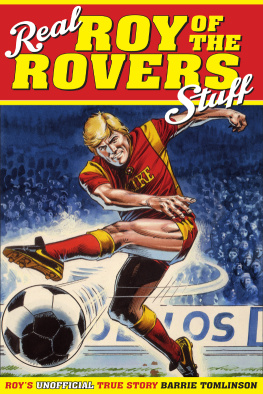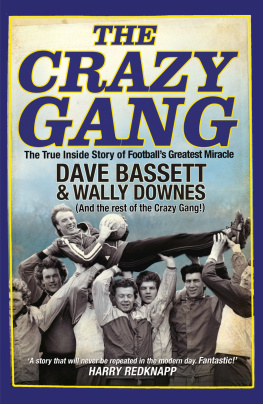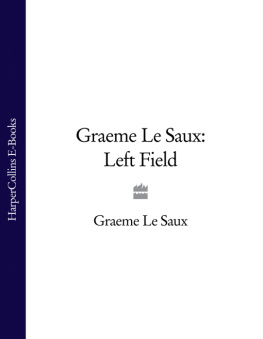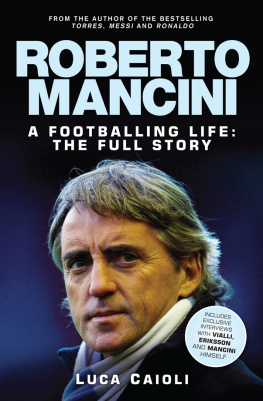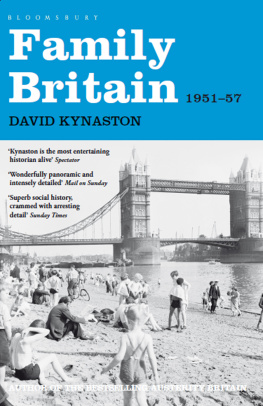First published by Pitch Publishing, 2016
Pitch Publishing
A2 Yeoman Gate
Yeoman Way
Durrington
BN13 3QZ
www.pitchpublishing.co.uk
Barrie Tomlinson, 2016
Roy Of The Rovers is used as trademark, Rebellion Publishing Ltd, all rights reserved. All images used with the permission of Rebellion Publishing Ltd.
All rights reserved under International and Pan-American Copyright Conventions. By payment of the required fees, you have been granted the non-exclusive, non-transferable right to access and read the text of this e-book on-screen. No part of this text may be reproduced, transmitted, downloaded, decompiled, reverse-engineered, or stored in or introduced into any information storage and retrieval system, in any form or by any means, whether electronic or mechanical, now known or hereinafter invented, without the express written permission of the Publisher.
A CIP catalogue record is available for this book from the British Library
Print ISBN 978-1-78531-212-0
eBook ISBN 978-1-78531-266-3
--
Ebook Conversion by www.eBookPartnership.com
CONTENTS
For Lisa, Roy and Penny.
Without them, none of this would be possible.
ROYS UNOFFICIAL TRUE STORY
I N 1987, when the Queen and Duke of Edinburgh visited the headquarters of IPC Magazines, the publisher of Roy of the Rovers, the Duke asked me, This Roy of the Rovers. Is it a soap opera? I thought for a moment and then I said, Yes, sir...it is! Previously, I had not realised that I had turned the Roy story into a soap opera. He had also become the most famous footballer in Britain and the phrase Real Roy of the Rovers stuff had become a way for commentators to indicate that a certain piece of football action was in the character of Roy of the Rovers.
There have been a few attempts to tell Roys story but I feel I am in a unique position to place on record all I know about Mr Roy Race. I was lucky enough to meet and work with the wonderful people who were involved with Roy of the Rovers in the very early years. I can tell you in some detail all the things which happened to Roy during the years I was in charge of the title. I might be a bit critical about what happened afterwards so I will concentrate on my time with Roy, which covered over 28 years.
This is Roys true story, as seen by me, working with him as a sub-editor, editor and later as group editor. I was his agent, his PR man and his best friend. We went through a lot together but what happened turned him into a character that is still loved and admired by millions of football fans all over the world. People who grew up reading the adventures of Roy of the Rovers are now adults themselves and many are fathers, or even grandfathers.
Spanning three generations at least, its little wonder that Roy has such a special place in the hearts of the British people. I was so lucky to be involved with Roy for so long. I think I had a very special job and it is one I am proud of.
I first worked with the great Roy Race in the early 1960s, when I became a sub-editor on the Tiger comic. Roys story was top of the Tiger popularity charts. He had appeared in the very first issue in September 1954 and had immediately become the readers favourite character.
Derek Birnage was the first editor of Tiger. I shared an office with Derek and the Tiger staff just after I joined Fleetway Publications in 1961. I became a sub-editor on Lion, under the editorship of Bernard Smith. The Lion and Tiger staff shared the same large office. Derek and Bernard were true gentlemen and great friends. Bernard taught me the editorial system an editor should use. It was a system that I followed throughout my career.
The aforementioned large office contained three Lion staff, three Tiger people, the sports editor and the department junior. It was a big office, so big that at lunchtime, when I was a sub-editor, we would play a game of cricket in it, using a wooden ruler, with a cardboard tube stuck on the end of it as a handle, which made a bat, three cardboard tubes (used for sending artwork) as stumps and a roll of sticky tape as a ball. The games were vigorous, causing one senior editorial man to remark, at the end of one lunchtime, It smells like a jockstrappers convention in here!
It was in 1954 that Derek Birnage commissioned freelance author Frank Pepper to write the opening episode of the Roy story. Frank had vast experience in writing comic strips for boys and was the ideal choice. He was already writing the Captain Condor strip in Lion, as well as other stories.
But a good story needs a good artist and Derek hit the jackpot when he persuaded artist Joe Colquhoun to illustrate Roys adventures. Joe was one of the very best artists employed by the comics and he later became famous for his brilliant interpretation of the Charleys War story in Battle, which showed the First World War as it really was. The detail in all Joes drawings, on whatever subject, was amazing.
Pressure of work meant that Frank could not continue to write the Roy story and Joe took over the scripting, as well as the illustrating. Then Derek wrote scripts himself and later the story was credited to none other than Manchester United and England striker Bobby Charlton. I think this was one of the first commercial tie-ups between a footballer and a publication. Derek created a precedent which I was to follow, many years later. Eventually, Frank returned to writing Roy and did the script for many years, with great results.
WHO CHRISTENED ROY?
Who thought up the name Roy of the Rovers? Many people have claimed that they came up with the title idea and I have heard many different versions. The one I like to go with is that the idea came from Lion editor Bernard Smith.
Many years after he retired, Bernard wrote to me and said, When they were looking for a title to the series, it was I who suggested Roy of the Rovers. So what?
That letter arrived in 1994 and Bernard went on to celebrate 104 birthdays! He had worked on Champion comic and one of the main characters in that publication was a footballer called Danny of the Dazzlers. Perhaps that was an inspiration!
I can remember reading Danny of the Dazzlers myself. It was a written story, published before the onset of picture-strips. It was also written by Frank Pepper, as was the famous Rockfist Rogan story, which was also in Champion.
THE EARLY DAYS
Issue one of Tiger had Roy of the Rovers on the front cover. Roy was a young lad playing in a local cup match. Unknown to Roy, the game was being watched by Alf Leeds, manager of the Melchester Rovers A team. Mr Leeds was smoking a pipe! In later years, smoking would be banned from the publication. Roy scored a sensational goal, with his right foot (he was to become famous for his left-footed shot!). Alf was impressed. Very impressed! Roy was soon to sign for the famous First Division team...and the rest, as they say, is history. The first words Roy ever uttered in a comic were, WHY YES, SIR! Roy was replying to Alf, who had asked to have a word with Roy. Our hero would have a lot more to say for himself in later instalments but it was never to be an easy ride for him. Everything that could happen to a footballer, happened to Roy. Often many times over!

